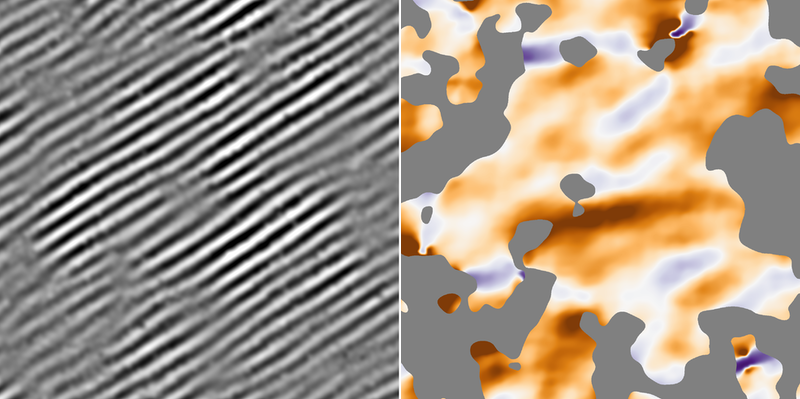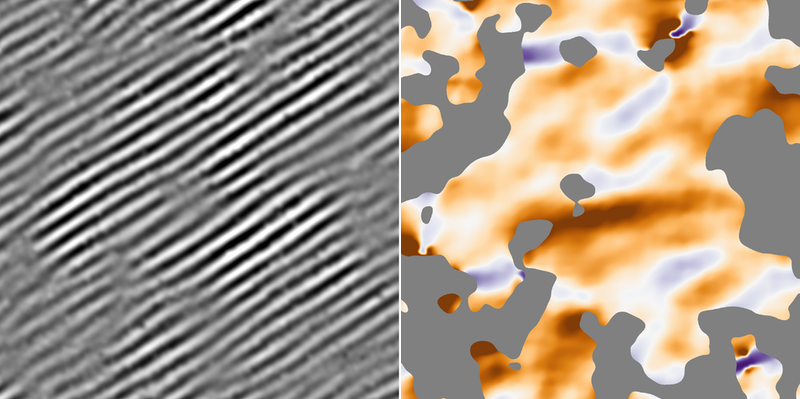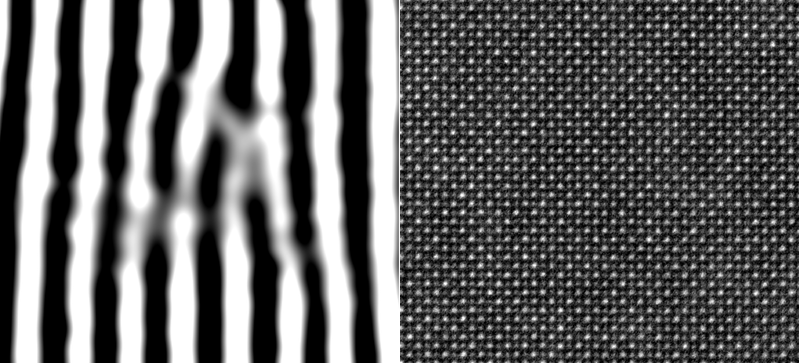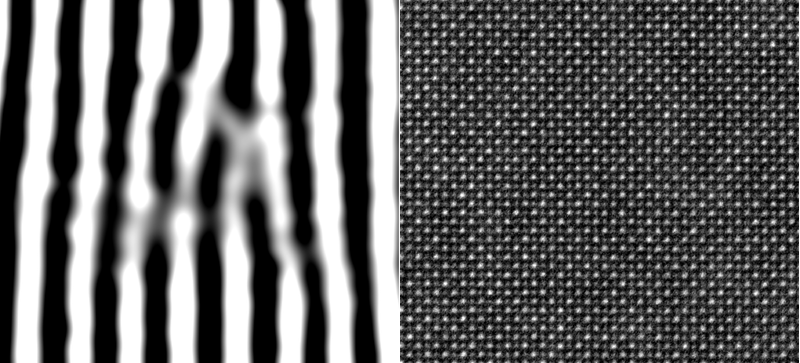Orderly State of Electrons Melts on Camera
Many of the exotic materials being investigated for next-generation technologies exhibit charge order, a state in which the electrons arrange themselves into a periodic pattern, such as stripes of high and low electron density. Researchers have now shown that they can track the evolution of this state as it warms up and melts away by using a cryogenic electron microscope [1]. Their experimental approach offers a new way to explore the interactions between different phases of quantum materials, which could inform the development of future electronic and data storage devices.
In certain materials with strongly interacting electrons, charge order appears—usually below room temperature—as an electron density that varies periodically in a pattern of stripes, a checkerboard, or a more complicated 3D structure. Researchers want to understand this phase because it coexists and interacts with other states and properties of the material, many of which are useful for novel devices and technologies. In high-temperature superconductors, for example, charge order is known to suppress the material’s superconducting behavior. In other materials, strong coupling between charge order and ferromagnetism can trigger colossal magnetoresistance, a property that could be exploited in magnetic storage devices.
The electron arrangement in a charge-ordered state cannot be imaged directly, but in some materials strong coupling between the charge order and the atomic lattice produces periodic distortions of the crystal structure. These periodic lattice distortions (PLDs) can be detected with picometer precision using a cryogenic scanning transmission electron microscope (cryo-STEM).
However, these experiments have been limited to a single temperature of around 100 K, so the evolution of charge order with changing temperature could not be observed. Researchers have also been unable to study the melting process that occurs as the state is heated through its transition temperature, above which the charge order is lost. Conventional sample holders cannot heat a material without warming other parts of the instrument, causing thermal expansion that disturbs picometer-scale measurements.
To solve this problem, researchers originally led by Lena Kourkoutis of Cornell University (who died in 2023) used a cryo-STEM system that they demonstrated in 2020 [2]. It uses a microelectromechanical heating element that heats only the sample under study—up to 1000 K—without causing any thermal expansion within the instrument.
The researchers studied Bi0.35Sr0.18Ca0.47MnO3 (the subscripts are approximate), one of a family of manganites in which the charge order is strongly coupled to the atomic structure. This particular manganite transitions from a charge-ordered state to a disordered insulator at around 300 K.
With their sample at a temperature of 198 K, the Cornell researchers observed PLD stripes as expected. However, they also saw isolated defects—locations where a slight mismatch between the periodicities of the electronic arrangement and the atomic structure caused a local warping of the charge order and a merging of two stripes into one. These defects have been seen previously but have never been tracked as the temperature rises.
On heating the sample, the researchers found that these defects were surprisingly mobile. Individual defects could be tracked as they migrated across the lattice, but overall their motion had no effect on the regularity of the PLD stripes. “This [observation] offers the possibility that such defects could be controlled with other external stimuli to engineer the structure and behavior of the charge order,” says Berit Goodge, a member of the Cornell team who is now at the Max Planck Institute for Chemical Physics of Solids in Germany.
Closer to the phase transition, at around 283 K, the formation of additional defects started to disrupt the long-range order, and the wavelength of the PLD stripes became longer. These observations suggest that the coupling between the charge order and the atomic lattice was weakening. At 293 K the stripes broke up into smaller domains, with the charge order almost disappearing at 303 K. This melting behavior is consistent with theory but has not previously been imaged at the atomic scale.
“This work provides a direct observation of the nanoscale processes that take place during the evolution of a quantum state, showing how charge order can break spontaneously when the material is heated,” says Robert Hovden of the University of Michigan.
While this experiment focused on the effects of temperature on charge order, the team believes that further adaptations could be made to the microscope to study other exotic states that are more difficult to characterize, such as superconductivity. “We hope to apply electrical biases or magnetic fields to manipulate material behavior while still imaging the structure with atomic resolution,” Goodge says.
–Susan Curtis
Susan Curtis is a freelance science writer based in Bristol, UK.
References
- N. Schnitzer et al., “Atomic-scale tracking of topological defect motion and incommensurate charge order melting,” Phys. Rev. X 15, 011007 (2025).
- B. H. Goodge et al., “Atomic-resolution cryo-STEM across continuously variable temperatures,” Microsc. Microanal. 26, 439 (2020).







